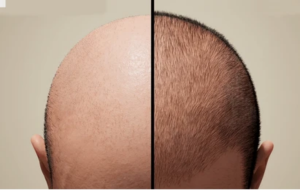Sleep paralysis, a disconcerting phenomenon affecting individuals across various age groups, involves a temporary inability to move or speak while falling asleep or waking up. Although typically brief, lasting from seconds to minutes, the experience can be intensely unsettling due to the individual’s awareness of their surroundings amidst their immobilized state. While not life-threatening, the accompanying hallucinations, chest pressure, and pervasive sense of fear can be deeply disturbing, potentially disrupting sleep patterns and overall well-being. This phenomenon often goes unreported due to a combination of fear and a lack of understanding, hindering accurate diagnosis and appropriate management.
Several factors can contribute to an increased risk of experiencing sleep paralysis, many of which stem from disruptions in sleep cycles or irregular sleep routines. Sleep deprivation, coupled with poor sleep quality, can significantly heighten susceptibility. Abrupt shifts in sleep schedules, a common occurrence in individuals working irregular hours or experiencing jet lag, can also trigger episodes. Sleeping on one’s back has been identified as a potential risk factor, while heightened stress and anxiety levels can further disrupt normal sleep patterns, making individuals more prone to sleep paralysis. Certain medications and underlying sleep disorders, such as narcolepsy, can also contribute to the occurrence of these unsettling episodes. These triggers collectively disrupt the normal progression of Rapid Eye Movement (REM) sleep, a stage characterized by active brain activity despite a relaxed and immobile body. When awakening or falling asleep before the REM cycle concludes, the brain regains consciousness while the body remains temporarily paralyzed, resulting in the characteristic features of sleep paralysis.
Recognizing the symptoms of sleep paralysis is crucial for accurate diagnosis and appropriate management. The primary indicator is the unmistakable inability to move or speak during transitions between sleep and wakefulness. Accompanying this core symptom are other indicators, including a sense of awareness coupled with an inability to respond, a feeling of pressure on the chest or difficulty breathing, and unsettling hallucinations involving visual or auditory distortions. A pervasive sense of panic or fear often accompanies these experiences, leaving individuals feeling distressed and vulnerable. Following an episode, lingering fatigue is common, further impacting daily functioning. It is important to differentiate these symptoms from nightmares or mental health issues, highlighting the importance of a professional evaluation, especially if episodes become frequent.
A more in-depth understanding of the causes of sleep paralysis reveals a complex interplay of neurological and psychological factors. While the disruption of the REM cycle is central to the phenomenon, individuals with pre-existing conditions such as anxiety disorders, post-traumatic stress disorder (PTSD), and depression are more susceptible to experiencing sleep paralysis. Genetic predisposition may also play a role, although further research is needed to fully elucidate the genetic underpinnings. Lifestyle factors, such as irregular working hours, especially night shifts, significantly increase the likelihood of episodes. Students and working professionals experiencing high levels of stress due to erratic sleep patterns are particularly vulnerable. Even dietary choices and screen exposure before bedtime can influence sleep quality and contribute to the development of sleep paralysis. A comprehensive understanding of the underlying causes requires consultation with a sleep specialist or a neurologist with expertise in sleep disorders.
The impact of sleep paralysis extends beyond the immediate distress experienced during an episode. The fear and anxiety associated with these events can lead to sleep avoidance and insomnia, creating a vicious cycle that further disrupts sleep patterns. The emotional toll can be significant, contributing to feelings of helplessness and vulnerability, particularly if episodes are frequent or intense. The intrusion of hallucinations can be profoundly disturbing, blurring the lines between reality and dream states, and potentially impacting mental well-being. Long-term consequences can include chronic sleep deprivation, impacting daytime functioning, mood regulation, and overall quality of life. Seeking professional help is crucial for managing these long-term effects and implementing strategies to prevent future episodes.
Despite the unsettling nature of sleep paralysis, it is a treatable condition. Recognizing the symptoms and understanding the underlying causes empowers individuals to take proactive steps towards managing the condition. Seeking professional guidance from a qualified neurologist or sleep specialist is essential for accurate diagnosis and personalized treatment strategies. These strategies may include lifestyle modifications to improve sleep hygiene, such as establishing regular sleep schedules, creating a conducive sleep environment, and managing stress levels. In some cases, medications may be prescribed to address underlying sleep disorders or manage associated anxiety. Cognitive behavioral therapy (CBT) can be effective in addressing the psychological impact of sleep paralysis, helping individuals cope with the fear and anxiety associated with the condition. With appropriate intervention and support, individuals can regain control over their sleep and minimize the disruptive effects of sleep paralysis.














